Search titles
Displaying results 1 to 10 of 69.
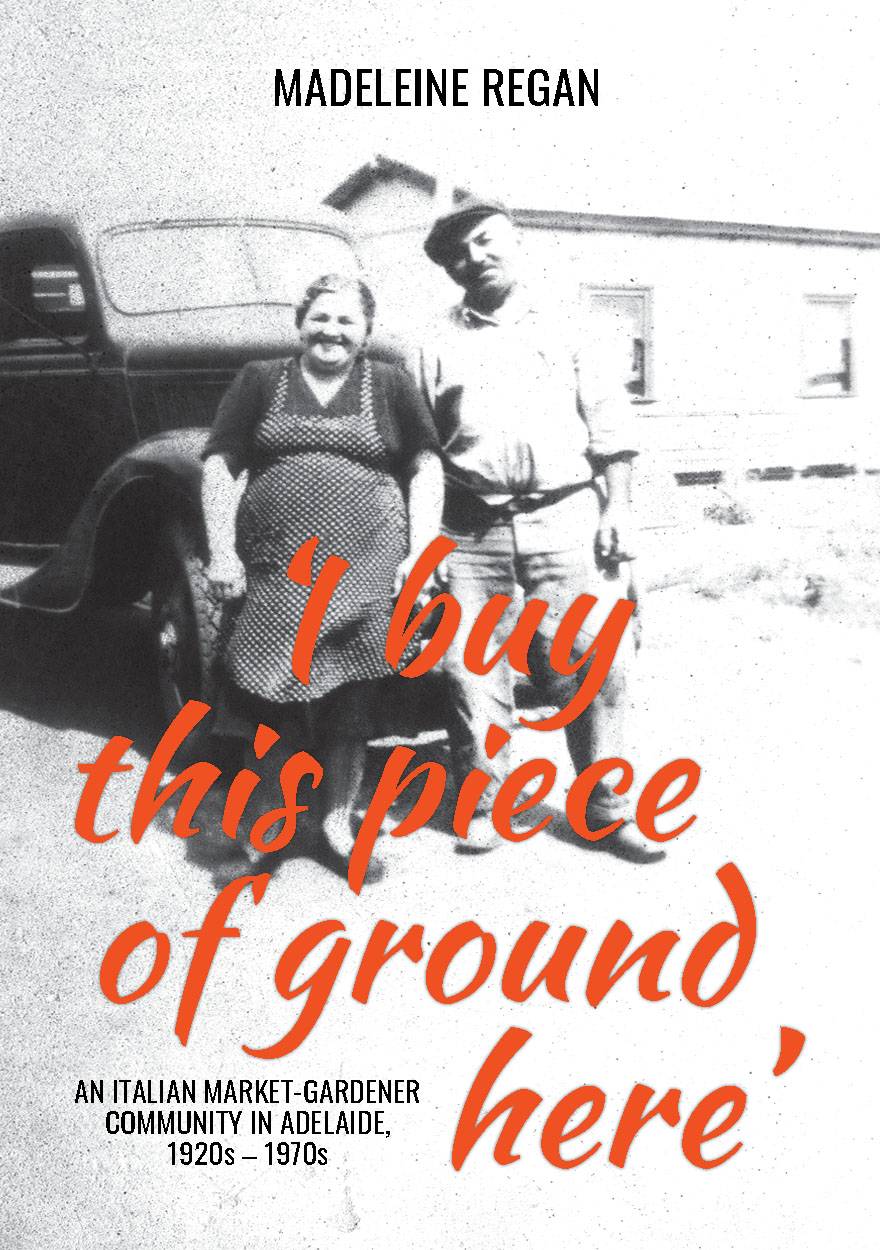
‘I buy this piece of ground here’ »
An Italian market-gardener community in Adelaide, 1920s–1970s
Authored by: Madeleine Regan
Publication date: May 2025
‘I buy this piece of ground here’ is a group biography that examines the lives and work of a cohort of Italian migrant families from the Veneto region who arrived in Australia in the 1920s and formed a new community and identity as market gardeners in outer suburban Adelaide.
This book investigates the settlement processes in a period of Australian migration history often overlooked in favour of post–World War II studies of mass migration and multiculturalism. It considers the impacts of the Depression, fascism, World War II, the White Australia environment that excluded southern Europeans and, ultimately, the suburbanisation that overtook their community.
Drawing on 65 oral histories with sons and daughters of the first generation, archival and published records, the narrative reveals what it felt like to work market gardens that became economic and emotional anchors for a new community. The first generation raised families, worked and bought the land, planted vegetables, bartered for glasshouses, sold produce at market, celebrated in packing sheds and established a stable, resilient community between the wars.
The Veneto families developed successful commercial market gardens and created a self-contained village or paese in a small area west of Adelaide. Withstanding marginalisation, the market gardeners lived and worked together in a small community, prospered and created an economy, a sense of belonging and a future for their children.
‘A formidably detailed piece of research and the product of a most fruitful community collaboration.’
—Frank Bongiorno AM, Professor of History, ANU

Australian Journal of Biography and History: No. 9, 2025 »
Special Issue: Oceania Lives
Publication date: 2025
This special issue of the Australian Journal of Biography and History, ‘Oceania Lives’, showcases a collection of writing and dialogue from an emerging group of Pacific scholars interested in rethinking Australia’s past and present through historical biography. While spanning multiple time periods, geographies, and communities, the issue draws its thematic coherence from a sustained exploration of the different ways in which Pacific peoples – in this case, South Sea Islanders/Australian South Sea Islanders, Papua New Guineans, Tongans, Pitcairners, West Papuans, Solomon Islanders and Fijians − have and continue to encounter Australian coloniality in its various forms.
The issue is notable for its inclusion of two dialogues, drawn from public events hosted in recent years by the Oceania Working Party of the Australian Dictionary of Biography. These dialogues, with their related emphases on indigeneity, relationality and knowledge production, set the scene for the entire special issue which aims to interrogate and explore the position of Pacific peoples on Indigenous lands and waterways which comprise contemporary Australia. Melinda Mann, Kim Kruger and Imelda Miller powerfully demonstrate how this can be done through their approaches to writing South Sea Islander biography while Lisa Hilli also reflects on her artistic and biographical method in conversation with Wendy Mocke about the FMI (or Daughters of Mary Immaculate) sisters of Vunapope, New Britain, who helped save hundreds of lives during the Second World War.
In addition to the dialogues, ‘Oceania Lives’ features four reflective pieces and three research articles. Using the Tongan narrative approach, talanoa-vā, Ruth (Lute) Faleolo and Emma ‘Ilaiū Vehikite use the written records of Wesleyan missionary Walter Lawry to reimagine the early 19th century voyage of Futukava to Australia. In ‘My grandmother is (not just) a small brown fragment’, Pauline Reynolds responds poetically to an archival note attached to a tapa or barkcloth donated to the Macleay Collections. Christopher Chevalier offers valuable reflections on the completion and publication of his biography of Solomon Mamaloni and Romitesh Kant pays special tribute to the work of Professor Brij Lal, a pioneer in Pacific biography and so much more. In their research articles, Talei Luscia Mangioni and Camellia Webb-Gannon bring to life the stories of Melanesian activist women Amelia Rokotuivuna from Fiji and the Black Sistaz from West Papua. Finally, Nicholas Hoare and Theresa Meki ask, ‘What ever happened to the Papua New Guinea Dictionary of Contemporary Biography?’ Their answers – like those of other contributors to this issue − point to both the challenges and opportunities in writing about and working with Oceania lives in 2025.
Coming soon
Notify me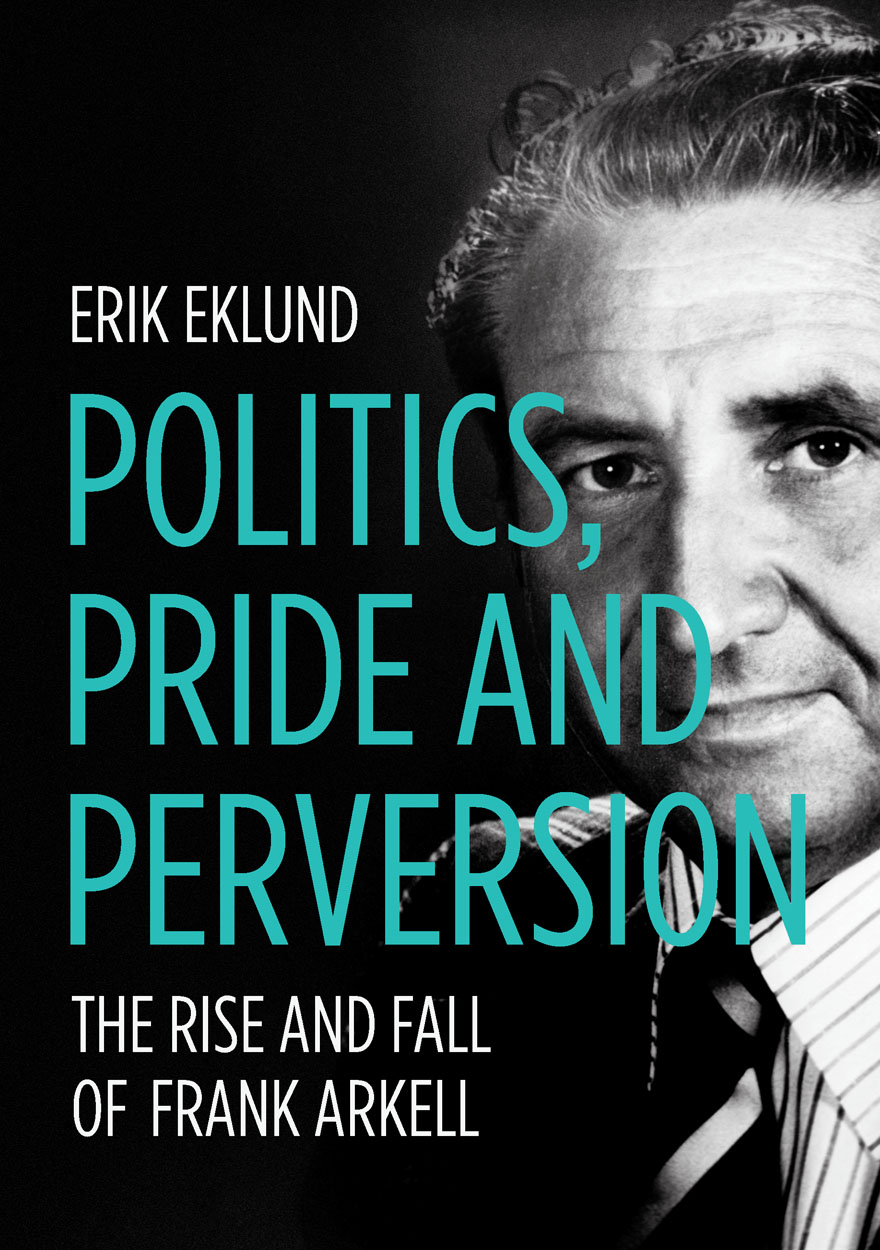
Politics, Pride and Perversion »
The Rise and Fall of Frank Arkell
Authored by: Erik Eklund
Publication date: March 2025
Frank Arkell (1929–1998) was the most successful politician of his generation; an Independent who served as Wollongong’s Lord Mayor (1974–1991) and state member (1984–1991). Arkell dominated Wollongong public life with unstoppable energy, eccentric flair, and a single-minded determination to support the city through economic restructuring. Despite his popularity, at the edges of public consciousness there was growing disquiet over Arkell’s private life …
‘A compelling biography … Eklund provides a nuanced exploration of Arkell’s relentless efforts to transform Wollongong from a ‘steel city’ to the ‘Leisure Coast’, as well as his connections to an extensive paedophile network exposed during the 1997 Wood Royal Commission …’
— Associate Professor Jayne Persian, University of Southern Queensland
‘Eklund discloses the tragic consequences of unbridled male lust, deep social inequality and unaccountable class power … we have here a shocking story of sexual abuse and official corruption that brought untold suffering, political disgrace and, in the end, a brutal murder.’
— Professor Frank Bongiorno AM, author of Dreamers and Schemers: The Political History of Australia
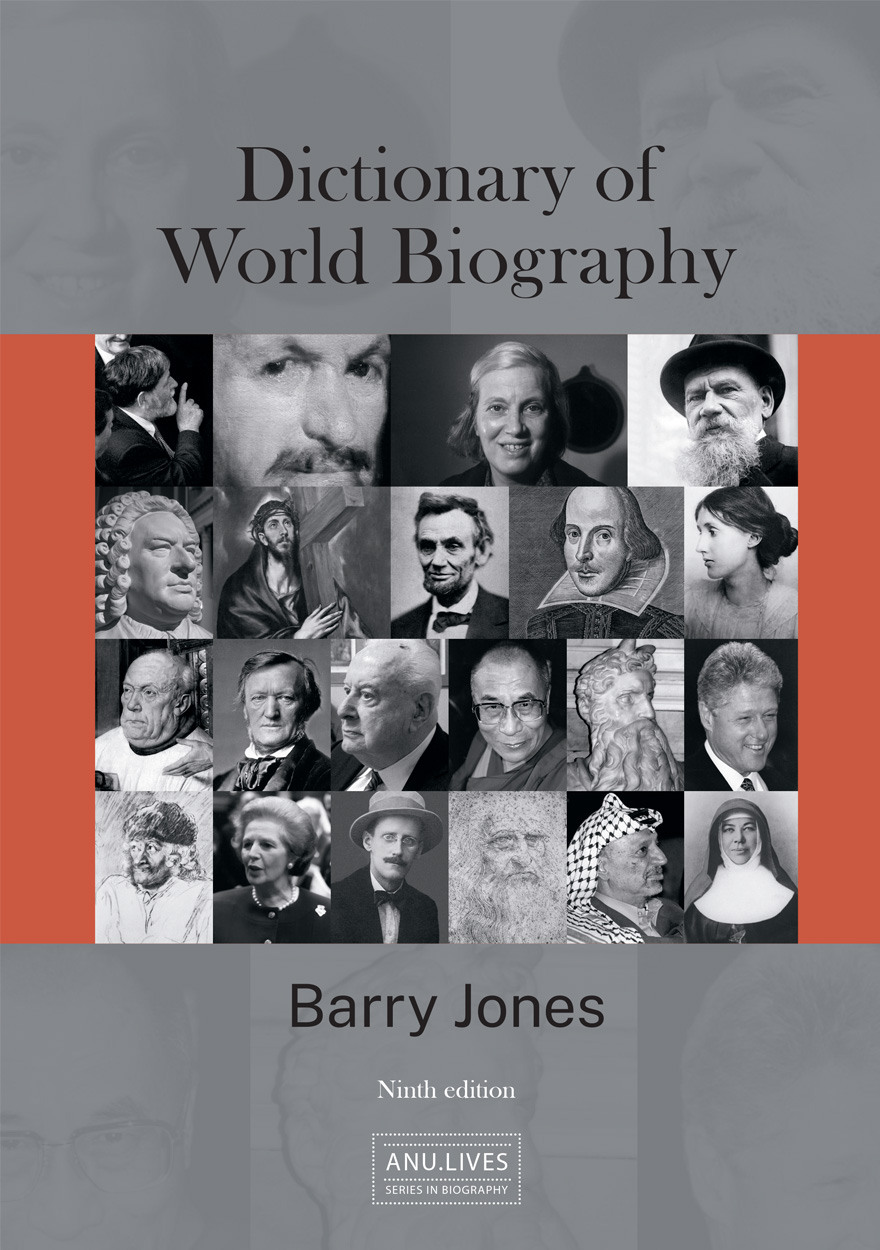
Dictionary of World Biography »
Tenth edition
Authored by: Barry Jones
Publication date: January 2025
Jones, Barry Owen (1932– ). Australian politician, writer and lawyer, born in Geelong. Educated at Melbourne High School and Melbourne University, he was a public servant, high school teacher, television and radio performer, university lecturer and lawyer before serving as a Labor MP in the Victorian Parliament 1972–77 and the Australian House of Representatives 1977–98. He took a leading role in reviving the Australian film industry and abolishing the death penalty in Australia, and was the first politician to raise public awareness of global warming, the ‘post‑industrial’ society, the IT revolution, biotechnology, the rise of ‘the Third Age’ and the need to preserve Antarctica as a wilderness. In the Hawke Government, he was Minister for Science 1983–90, Prices and Consumer Affairs 1987, Small Business 1987–90 and Customs 1988–90. He became a member of the Executive Board of UNESCO, Paris 1991–95 and National President of the Australian Labor Party 1992–2000, 2005–06. He was Deputy Chairman of the Constitutional Convention 1998. His books include Decades of Decision 1860– (1965), Joseph II (1968), Age of Apocalypse (1975) and Knowledge Courage Leadership: Insights & Reflections (2016), and he edited The Penalty Is Death (1968, revised and expanded 2022). His bestseller, Sleepers, Wake! Technology and the Future of Work (1982, Fourth edition published in 1995) has been translated into Chinese, Japanese, Korean, Swedish and braille.
He received a DSc in 1988 for his services to science and a DLitt in 1993 for his work on information theory. Elected FTSE (1992), FAHA (1993), FAA (1996) and FASSA (2003), he is the only person to have become a Fellow of four of Australia’s five learned Academies. Awarded an AO in 1993, named as one of Australia’s 100 ‘living national treasures’ in 1997, he was elected a Visiting Fellow Commoner of Trinity College, Cambridge in 1999. His autobiography, A Thinking Reed, was published in 2006 and The Shock of Recognition, about music and literature, in 2016. In 2014 he received an AC for services ‘as a leading intellectual in Australian public life’. What Is to Be Done was published in 2020.
Format: Hardback
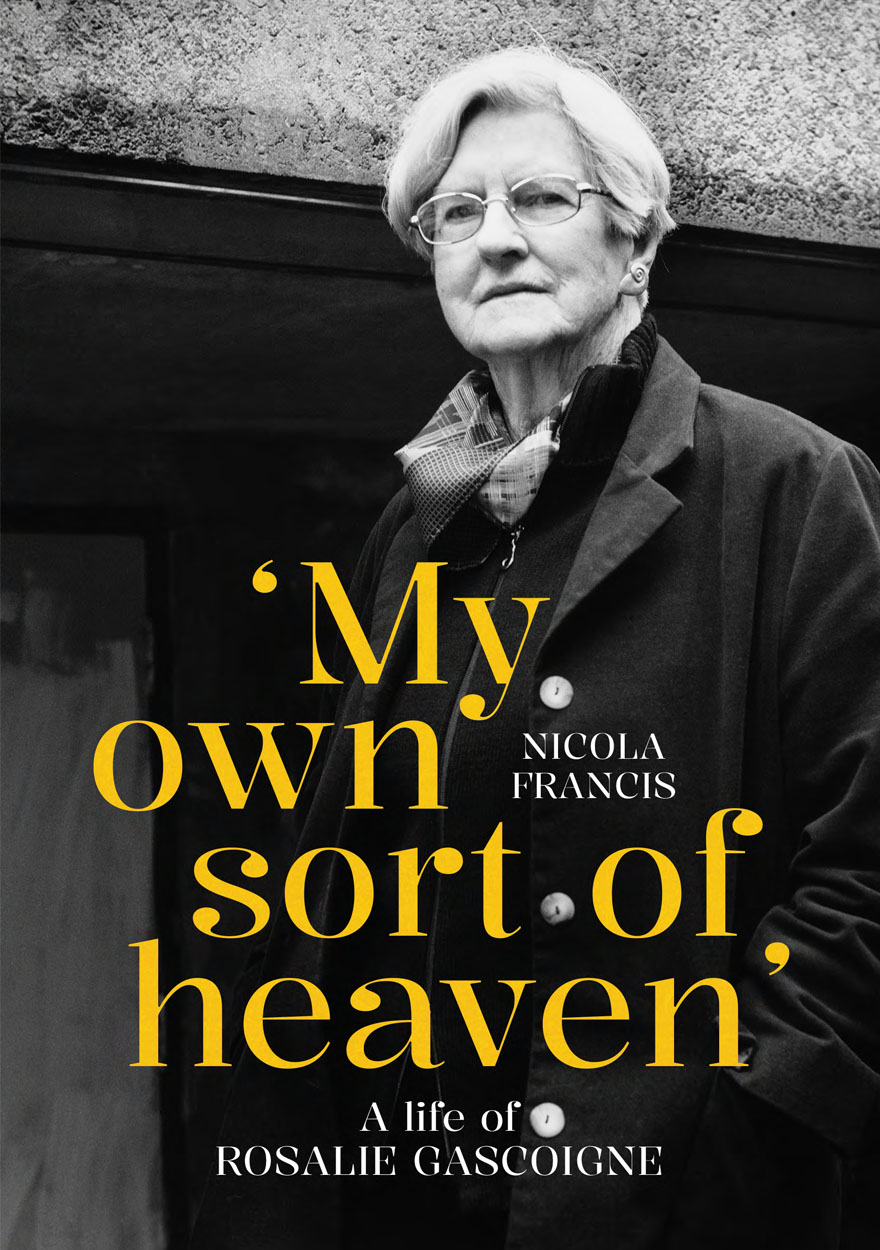
‘My own sort of heaven’ »
A life of Rosalie Gascoigne
Authored by: Nicola Francis
Publication date: October 2024
Widely regarded as a major Australian artist, Rosalie Gascoigne first exhibited in 1974 at the age of fifty-seven. She rapidly achieved critical acclaim for her assemblages which were her response to the Monaro landscape surrounding Canberra. The great blonde paddocks, vast skies and big raucous birds contrasted with the familiar lush green harbour city of Auckland she had left behind. Her medium: weathered discards from the landscape. By her death in 1999, her work had been purchased for major public art collections in Australia, Aotearoa New Zealand and New York, and had been exhibited across Europe and Asia.
Gascoigne’s story is often cast in simple terms—an inspirational tale of an older woman ‘finding herself’ later in life and gaining artistic acclaim. But the reality is much more complex and contingent. This biography explores Gascoigne’s achievement of her ‘own sort of heaven’ through the frame of the narrative she told once she had gained fame, using a series of interviews she gave from 1980 to 1998. It revolves around her frequently stated sense of feeling an outsider, her belief that artists are born not made, and other factors central to the development and impact of her work. Migrating to Australia from New Zealand in 1943, Gascoigne experienced the dramatic social changes of the 1960s and 1970s and benefited from the growth of cultural life in Canberra, a developing Australian art industry, and changing conceptions of aesthetic beauty.
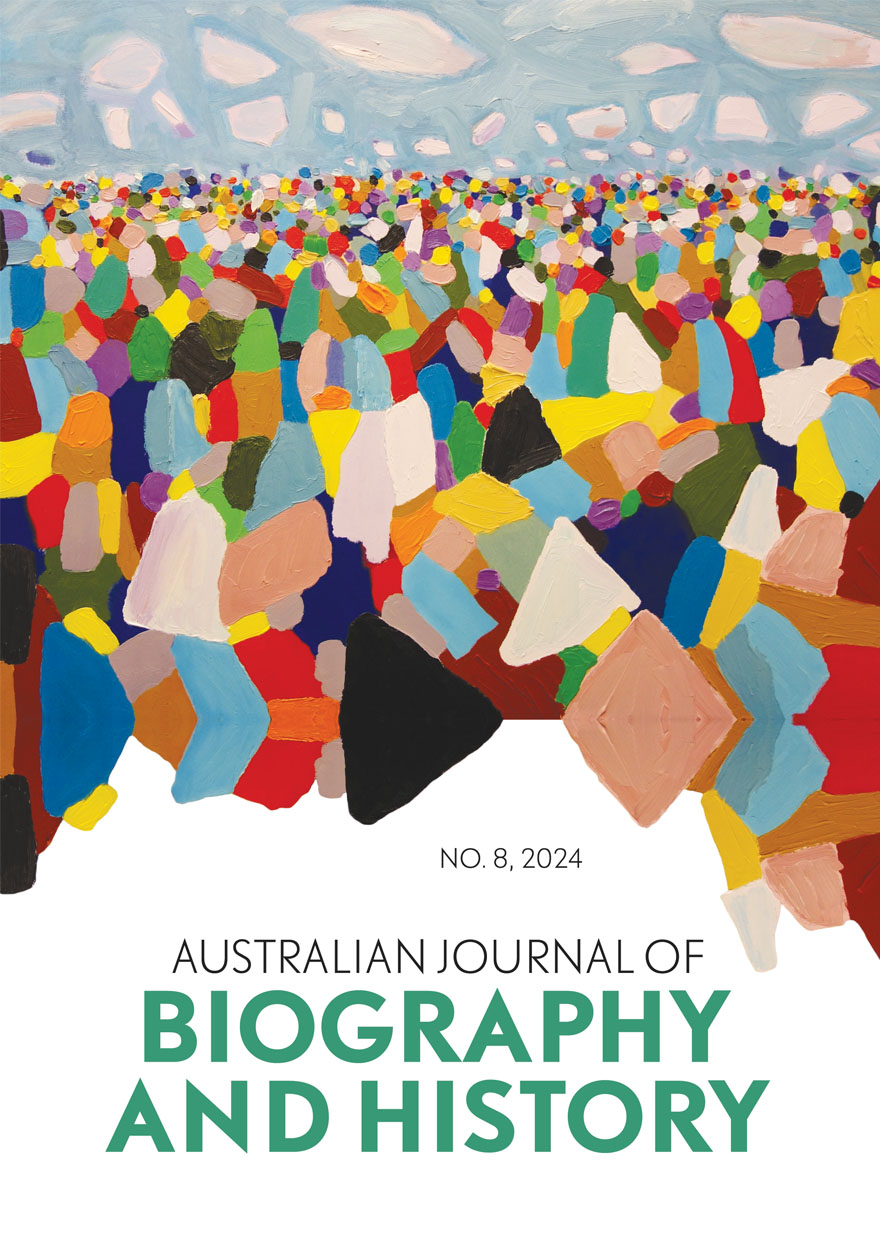
Australian Journal of Biography and History: No. 8, 2024 »
Publication date: February 2024
The Australian Journal of Biography and History No 8 (2024) applies biographical methodologies to enliven themes and episodes in Australian history. Studying John Wear Burton, the head of the Commonwealth department of external affairs between 1947 and 1950, Adam Hughes Henry explores some of the ways in which anti-communism in 1950s Australia served to limit critical thinking on the country’s foreign policy. Gary Osmond and Jan Richardson write on the Black sports promoter and entrepreneur Jack Dowridge, who lived and largely thrived in Brisbane between the mid-1870s until his death in 1922. Phillip Deery and Julie Kimber examine the often-overlooked figure of Evdokia Petrov, considering the ‘disjuncture between historical imagination and the archival record.’ In Richard Fotheringham’s article on the variety entertainer and singer Jenny Howard, aka Daisy Blowes, Howard emerges as a character in her own play. Martin Thomas relates in his article ‘Patrick White and the Path to Sarsaparilla’ how the novelist Patrick White demanded a ‘final pound of flesh from his biographer’ by making David Marr ‘sit with him at the dining table while he read it in front of him from beginning to end.’ The result was a biography of ‘complete artistic freedom’, ‘unauthorised’ certainly, but ‘aided and abetted by its subject.’ Patricia Clarke describes the experience of the journalist Iris Dexter, née Norton (1907–1974), in seeking, but until 1950 failing to obtain, a divorce from an abusive husband, and the devastating impact the episode had on her life. Two further articles in this number utilise collective biographical methodologies to illuminate historical episodes which have become emblematic in Australian history: Nichola Garvey relates the story of the ‘death ship’ Neptune, which arrived in New South Wales in 1790 as part of the infamous second fleet; and Peter Woodley examines the 1891 Queensland bush workers’ strike. This affair has generally been portrayed as a ‘war’ between capital and labour, but as Woodley argues, the strike also showed the ‘often intense and fraught intersections of individuals’ lives’, many of which would never have come to light were it not for the strike and its judicial consequences.

Australian Journal of Biography and History: No. 7, 2023 »
Special Issue: Convict Lives
Publication date: June 2023
This special issue of the Australian Journal of Biography and History explores the lives of convicts transported to Australia and asks how they can be investigated through various forms of biography. Given the ever-increasing range of methodologies for researching convict lives, this issue offers a timely reflection on their varying strengths, limitations and functions as well as on the future of convict history research. Nine refereed articles and two research notes provide new insights into various aspects of convict lives and experiences, combined with broad discussions on methodology.
In their introductory article, Matthew Cunneen and Malcolm Allbrook delve into the history of convict biography and the ways previous historians have attempted to explore and understand such lives. To overcome the gaps and silences in the archives, they argue, historians of convict Australia should employ a range of methodologies that each have their own particular domains of enquiry. In her research note, Janet McCalman reflects on the historiographical discoveries that have been made possible by the digitising, indexing and linking of convict records. She calls for future researchers to continue the work behind large datasets so that one day a fully comprehensive database of convicts can be created. Adopting a more fine-grained approach, Jennifer Bird reconstructs in detail from the archives the penal life of the convict Robert Edward Knox. Her analysis of Knox demonstrates an alternative to big-data approaches for understanding convict agency.
With a similarly refined scope—though one that looks at the convict system from the outside in—Jennifer Brookes examines the struggles of Lydia Anne to join her transported husband, Laurence Hynes Halloran, in Australia. Brookes’s article suggests that historians might consider how contemporary understandings of convicts can be enhanced by studying the lives of non-convicts associated with transportation. Matthew Cunneen reconstructs the lives of three convicts to further inform the experiences of people of colour under transportation. He argues for collective biography as a way of bridging the methodological shortcomings of purely biographical and prosopographical approaches. In the first large-scale study of the subject, Patricia Downes examines the social and legal conditions that saw freely arrived British soldiers sentenced to transportation within the Australian colonies. Complicating old narratives of the soldiers as contaminated by the convicts around them, she explores how military crimes resulting in transportation were sometimes driven by desires for freedom from military life and to protest service conditions.
Christine Fernon reports in her research note on the progress made in the National Centre of Biography’s First Three Fleets and Their Families project, an ambitious intergenerational study of Australia’s early colonial history. The preliminary findings give a sense of the insights that the project will provide into how convict lives formed the fabric of Australian colonial history. Kristyn Harman and Anthony Ray explore the intergenerational effects of the convict system through the experiences of three convicts of colour. In analysing these lives, they contribute to our understanding of interracial marriage, family formation and recidivism in Van Diemen’s Land. Hamish Maxwell-Stewart, David Andrew Roberts and Mark McLean draw on a wealth of convict records to show the potential of using big data to analyse thousands of convict lives in parallel. Doing so would allow the individual to be contextualised within the greater population and would present opportunities for temporal and spatial analysis, thereby deepening understandings of British criminal management.
Visually illustrating the potential of big data in studies of convict protest and collective biography, Monika Schwarz examines collective resistance networks in female factories in Van Diemen’s Land. She draws together the stories of previously unconnected women and uncovers episodes of resistance. Returning convict history to its material origins, Richard Tuffin, Martin Gibbs, David Roe and Sylvana Szydzik draw on archaeological methods of digital technology to recontextualise convict lives. By mapping sites of convict labour and quantifying the outputs from them, the authors collectively argue that adopting multi-scalar and multidisciplinary approaches to studying convict environments can deeply enhance the histories of those who were involved with them. This issue deepens understandings of Australia’s convicts, the lives they led and the ways historians can best study them.
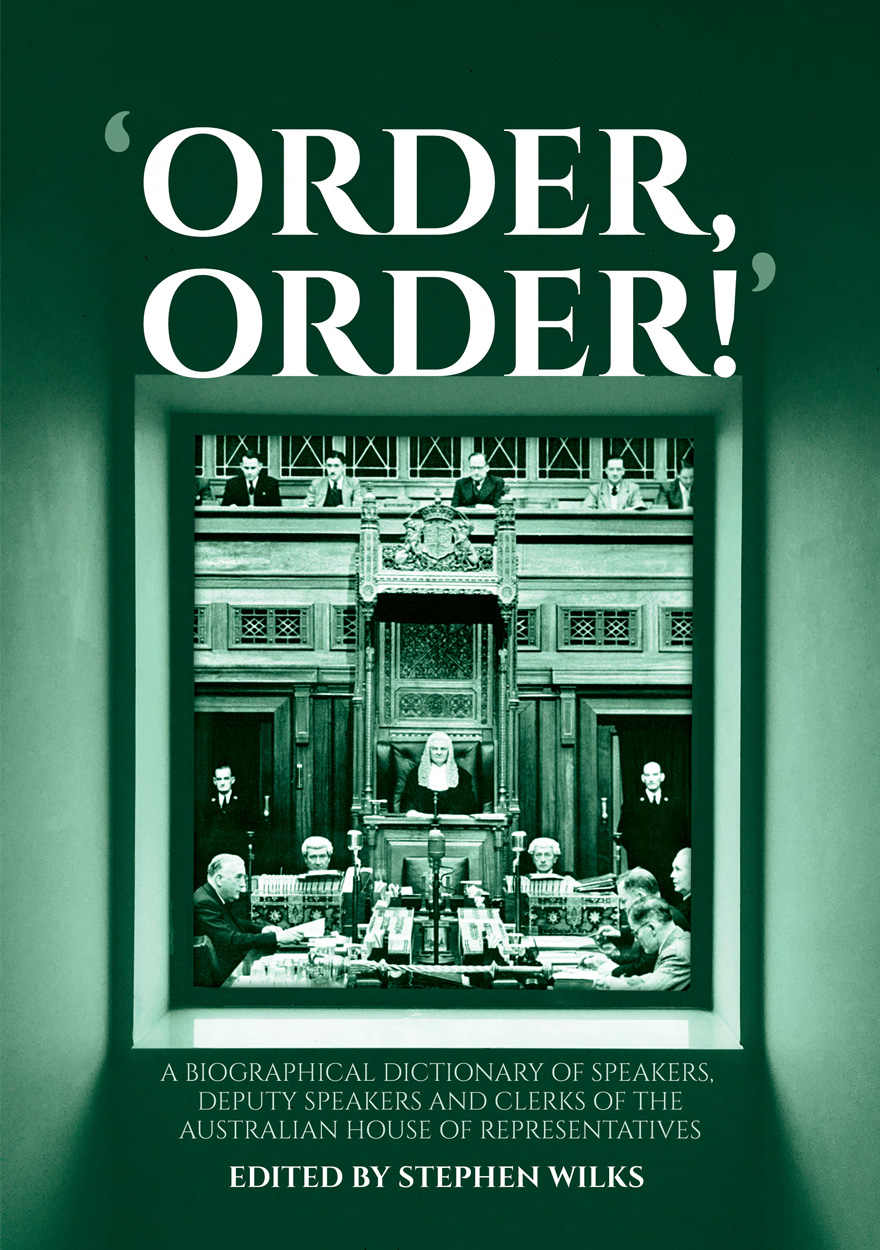
‘Order, Order!’ »
A Biographical Dictionary of Speakers, Deputy Speakers and Clerks of the Australian House of Representatives
Edited by: Stephen Wilks
Publication date: May 2023
‘Order, Order!’: A Biographical Dictionary of Speakers, Deputy Speakers and Clerks of the Australian House of Representatives shines a first-ever historical light on the remarkable men and women who have served in these national offices since Federation.
The Speakers include Frederick Holder, whose campaign to embed a Westminster-style Speakership died with him when he collapsed dramatically in the parliament; the much-loved Joan Child, Australia’s first female Speaker, whose struggles as a widow with five children fostered her commitment to social justice and made her, in the words of another Speaker, Anna Burke, ‘pretty fierce’; and Ian Sinclair, a warhorse of a parliamentarian who seemed to prove the poacher-turned-gamekeeper principle. The Deputy Speakers, a particularly eclectic assortment, include the strange and bleakly serious James Fowler, who once hopefully mailed a film synopsis to the American director Cecil B. DeMille and who ended his days warning of the perils of democracy. Amongst the Clerks are Frank Green, who, at the height of the Cold War, indiscreetly befriended members of the Communist Party, and the popular Jack Pettifer—a true child of parliament—who grew up in an apartment in the building.
This book includes analysis of what sorts of individuals typically filled these vital parliamentary positions, and the appearance of an Australian model of the Speakership based on pragmatic compromise. All three offices are typically more than just creatures of political parties—something that Australians should be prepared to defend against the remorseless encroachment of political partisanship.
Format: Hardback
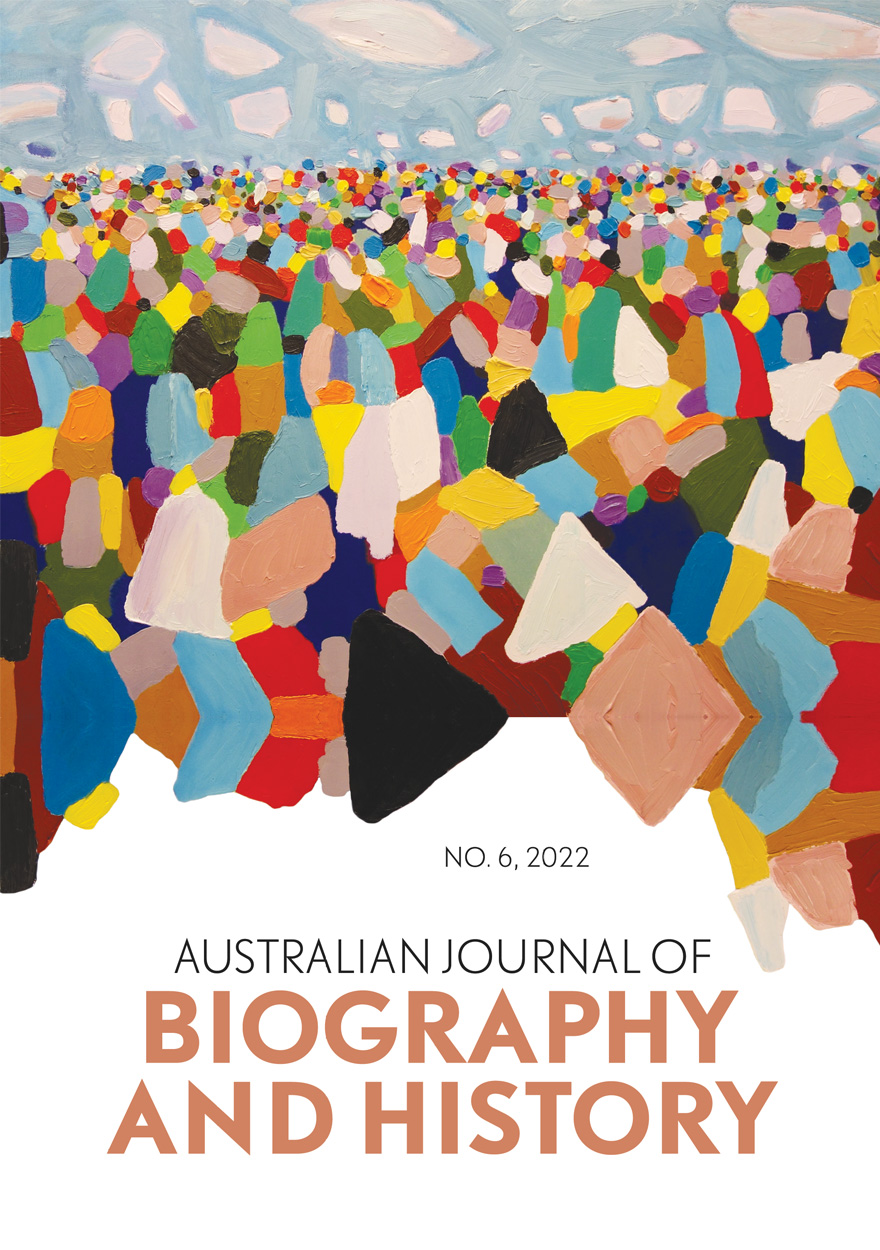
Australian Journal of Biography and History: No. 6, 2022 »
Publication date: May 2022
This special issue of Australian Journal of Biography and History, ‘Writing Slavery into Biography: Australian Legacies of British Slavery’, uses biographical approaches to explore how British slavery shaped the Australian colonies. It is the first stand-alone journal issue to feature an emerging body of historical work tracing the movement of people, investment and ideas from the Caribbean to Australia. Seven refereed articles and a roundtable discussion show how investment, imperial aspiration and migration turned towards Britain's ‘Second Empire’ in the aftermath of the Slavery Abolition Act 1833.
A substantive introduction reviews this emerging field of research and outlines preliminary findings. In her article, Jane Lydon examines the movement of two interconnected families (the Ridleys and Walcotts) from Demerara to Britain to the Swan River, where they acquired large land grants, participated in exploration and resource exploitation, and led the search for labour sources. Georgina Arnott investigates Western Australia’s first governor James Stirling’s biographical links to American and Caribbean slavery in light of ideas about race and labour that he promoted in Western Australia. And together Zoë Laidlaw and Georgina Arnott show how dictionaries of biography can be used alongside the Legacies of British Slavery database (hosted by University College London) to identify Australasian settlers with connections to slavery. They note the ways in which collective approaches to biography can reveal otherwise invisible patterns in global transfers of wealth, people and ideas.
With an eye to regionally specific processes of subjugation and enslavement in the northern Western Australian pearling and pastoralist industries, Malcolm Allbrook considers biography’s potential to illustrate the shadowy world of ‘blackbirding’ in relation to the perpetrators, the officials and the Aboriginal enslaved. Emma Christopher brings to life the colonial legacies of slavery in her account of Albert Messiah, Ishmael Williamson and John Henderson, sailors of African origin who worked on Pacific labour ships during the late nineteenth century, and whose lives illuminate the complex racial hierarchies of the Queensland frontier. Beth Robertson tells the layered story of her own great-great-grandfather, Edward Stirling, the illegitimate son of a British slave-owner and a woman of Ghanaian descent, whose material benefit from slavery helped him become a successful pastoralist and miner in South Australia, despite remaining the subject of racial prejudice.
Paul Arthur and Isabel Smith note the ‘biographical turn’ in museum exhibitions featuring stories of enslavement over the last two decades. They argue that this has enabled exhibitors to show stories of resistance, contingency and agency, albeit while navigating the ethical complexities of telling other people’s traumatic life stories. The feature section of this issue concludes with a roundtable discussion between Catherine Hall, Keith McClelland, Zoë Laidlaw, Jeremy Martens and Georgina Arnott on the topic of linking the legacies of British slave ownership to Australian colonisation. Here, Hall observes that biography, when used in combination with prosopography, reveals how the lives and family trajectories of slave owners were distinguished amongst imperial capitalists at large. This issue builds understanding of the precise ways that slavery shaped the Australian colonies.
Download for free
Not available for purchase
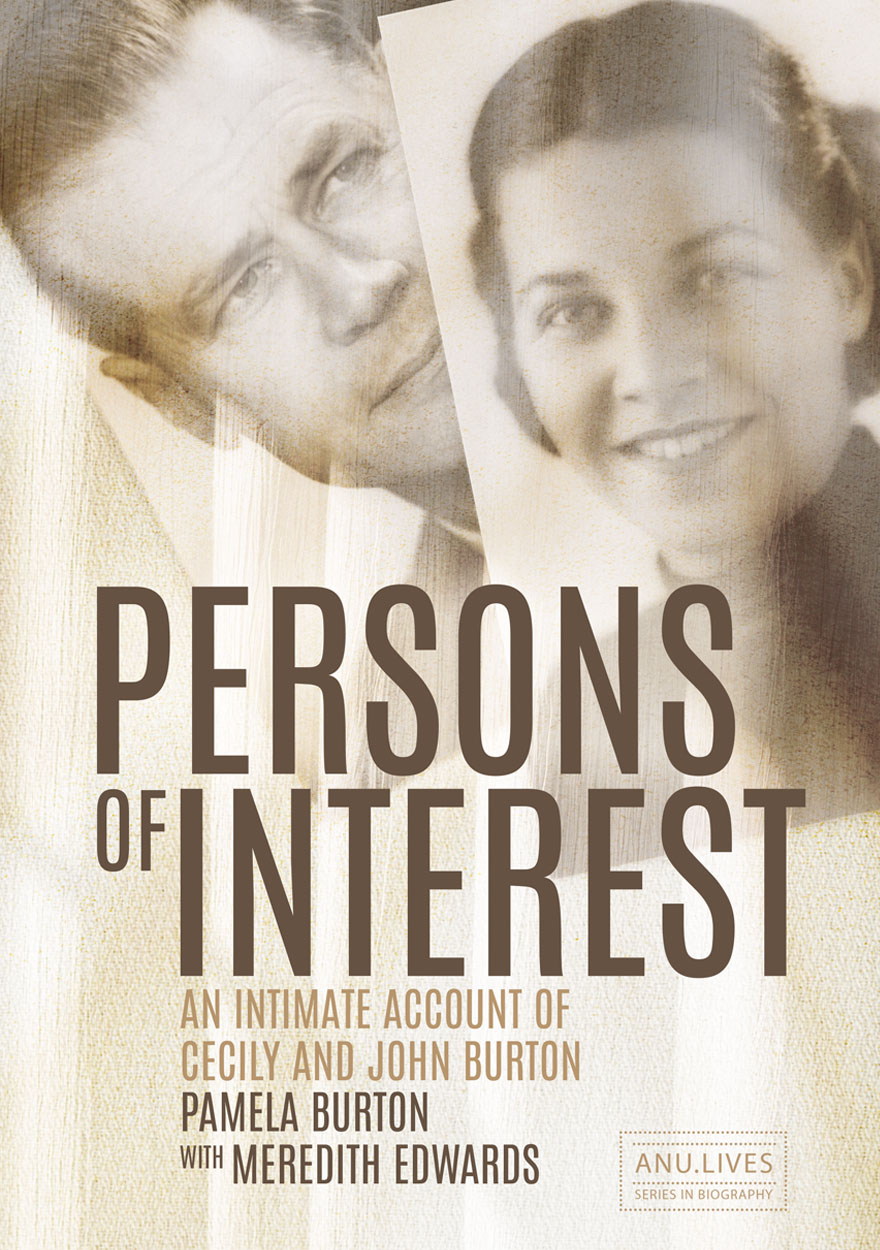
Persons of Interest »
An Intimate Account of Cecily and John Burton
Authored by: Pamela Burton, Meredith Edwards
Publication date: April 2022
A world in upheaval; two lives lived under stress … This story is set in the social and political landscape of pre– and post–World War II. It tells two vastly different tales of Cecily and John’s lives in Australia and overseas, as nations clashed, and governments and international organisations tried to remake the world.
Cecily Nixon knew that marrying John Burton would be bad for her. But she loved him and, impressed with this handsome, sullen young man and his belief that he could change the world for the better, saw her role in life as to serve the world through John.
Cecily’s story is a deeply personal and psychological one of love, duty and betrayal that explores the complexities of relationships. In a world that overwhelmed her, Cecily searched for ‘wholeness’ and delved deep into her psyche to find herself and emerge from John’s shadow.
John has been known as an influential and controversial young head of Australia’s Department of External Affairs – and as a would-be politician. It is less known that he was also an innovative farmer, bookseller, entrepreneur, arts patron and writer. He received international acclaim for his later work in conflict analysis and resolution.
These combined stories of courage and achievement unfold amid political intrigue and psychological trauma. ASIO surveillance, love triangles, loyalty, infidelity and tragedy all play their part in the Burtons’ lives.
'A remarkable memoir of a remarkable couple, exploring the fraught dynamic between the personal and political facets of their lives, the perspective lying at the core of modern feminism. Pamela Burton’s own insights are those of their youngest child, on whom the disruptions of the 1960s and 1970s had a heavy impact, but also that of her maturity, bringing her sharp forensic skills to the project. Assisted by Meredith Edwards, her eldest sister, Burton has given us an unflinchingly honest and utterly gripping record of our lives and times.'
— Sara Dowse, author of West Block and Sapphires



